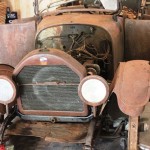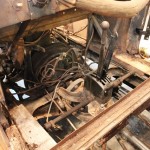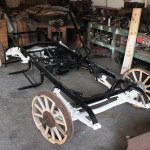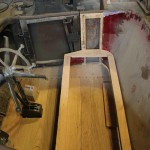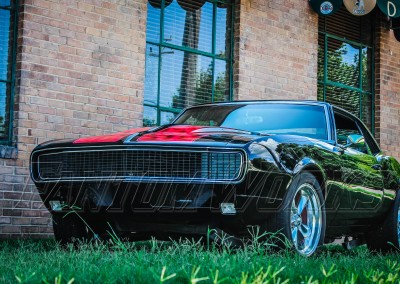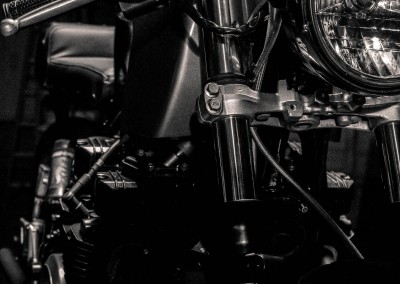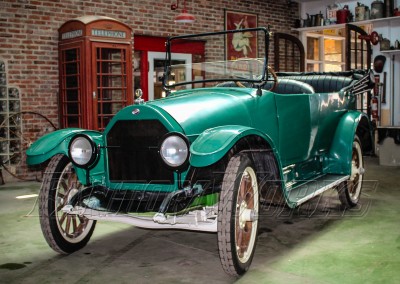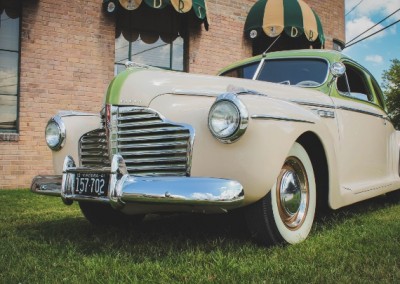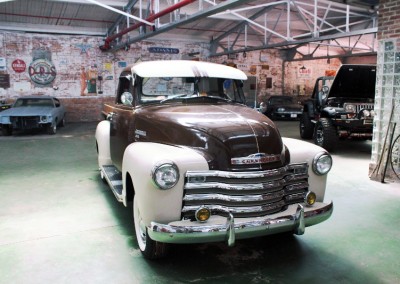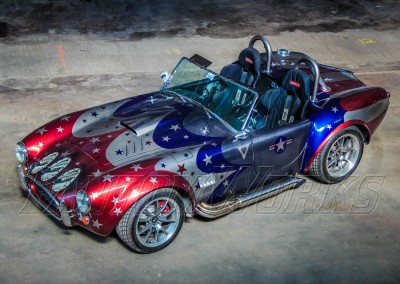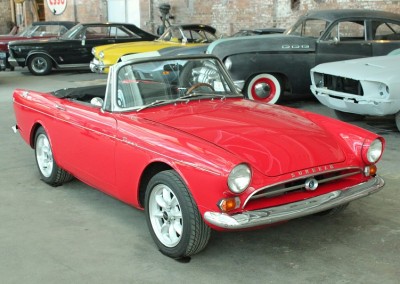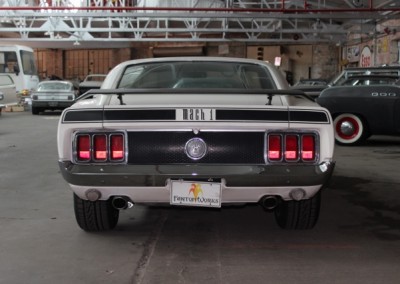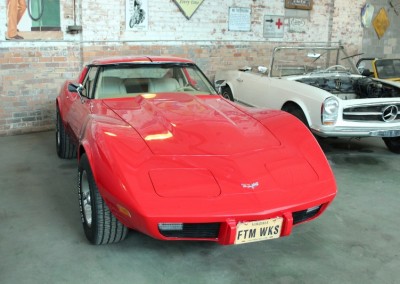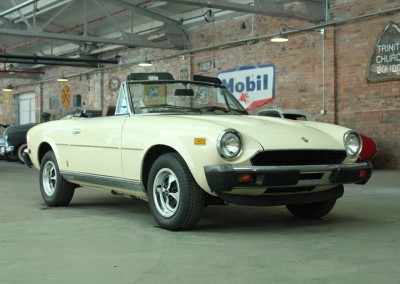1917 Willys Overland Touring Car

As seen on Season Two of FantomWorks
It took almost 100 years for my car to fall apart, rust away, get eaten by termites, fade from sun exposure, and rot from water damage, yet it took less than thirty minutes (including commercials) to make it new again on screen. In reality, it took over a year to repair and restore the car at FantomWorks. I know because I was there three to four times a week watching every phase of the process. The TV show only features highlights of the work. It would take a full-length movie (plus popcorn, soda, and intermission) to paint the picture of all the work that was really involved.
I watched my Overland get disassembled and dispersed to all the different departments in the impressive 60,000 square foot FantomWorks facility. This wood and iron dinosaur created many challenges for every division at FW, but you can’t just go to any auto parts store and purchase a clutch, break shoes, fender, or carburetor for a one-of-a-kind 1917 Overland. You have to repair what you have, re-make from what remains, or create new from photos if the part is missing. FantomWorks does all this and more. If a fender mounted headlight is missing from one side, they can make an exact replica from the other. Missing parts? No problem, they can make parts from photos or drawings.
FantomWorks has vast capabilities. They have an 1890’s woodshop full of historic tools, such as a large wood lathe that is itself made of wood and powered by an overhead belt drive system. You will also find state of the art paint, electrical, upholstery, engine, and metal fabrication shops that include old school mills and lathes as well as a computer controlled plasma cutter. Best of all, FantomWorks has the most talented staff in the country to make a neglected, prehistoric antique new again.
— David H.
Explore the Project Galleries
Arrival
Disassembly
Strip & Metal Fab
Mechanical
Body & Paint
Wood Reconstruction
Detail & Trim
Finish
It was Claude E. Cox who had designed and built the first Overlands – the first test drive being on 12th Feb 1903. He was initially financed by the Standard Wheel Company and operated from 671 Ohio St., Terre Haute, Indiana. Standard Wheel lost interest after a boiler explosion at the plant in 1904 and Cox was able to buy the fledgling company for $8,000. More money was required and Cox was able to obtain financial backing from David M. Parry who had made his fortune in manufacturing 2 wheel horse drawn carts.
The Overland Automobile Co. was incorporated on 31st March 1906 with Parry having a 51% share and Cox 49%. Unfortunately a short but severe economic depression in 1907 saw Parry’s empire badly hit, even to the extent of him losing his house. It had been at this point that J.N. Willys arrived on the scene having ordered 500 Overlands, sent a deposit of $10,000 and wondering where his cars were.
He found no complete cars, just partially assembled ones, and a company that didn’t have the money to pay the weeks wages. In a desperate and legendary 11th hour attempt to save not only his order, but the company, he was able to raise enough credit based on his financial friends in Elmira to keep the company going over that crucial Thanksgiving weekend when closure seemed so imminent and then into the following weeks.
He reorganized the company, upgraded production facilities and built a new factory in the summer of 1908 but soon realized demand was exceeding capacity, even though production of the then current Model 24 had totaled 465 vehicles, 10 times that of 1907.
Expansion was the order of the day and early in 1909 he acquired the Marion Motor Car Co. of Ohio. In September he acquired the huge and modern Pope plant in Toledo, Ohio for $285,000. This proved to be a bargain because J.N. Willys was able to sell off a lot of surplus material and recoup a lot of his money. On October 26th 1909, Willys
Overland as it was now called, was reorganized with the Toledo plant as the empire capital.
The Overland Model 38 was the first to be built in Toledo. Sliding gear transmissions replaced epicyclical, an interesting fact when you consider 1909 was the year Ford introduced the ever popular Model T, which of course used the epicyclical transmission right through to 1927. 1909 was also the year that Claude Cox left to follow a
career in photography, obtaining patents on new instruments and processes with his inventive and creative mind.
By 1911, the Indianapolis facility was only used for component assembly work. Willys Overland vehicle figures were 18,745 compared with Ford at 34,979.
By 1912 Overland had become America’s second largest producer of cars at 26,000 units and exceeded only by Ford. The position of second place behind Ford lasted right up until 1918.
As early as 1909 there had been vehicles badged with the Willys name as well as Overland. These vehicles were more expensive than anything badged simply as “Overland” and by 1917 the consumer was offered the choice of Overland, Willys, or Willys Knight depending on their budget and choice of engine – sleeve valve or poppet valve. Even though J.N. Willys openly preferred the Willys Knight, he could see that the cheaper poppet valved Overlands were his “bread and butter”.
There were many Overland models on offer, but the cheaper ones sold in higher volumes and this was even more evident during the 1914-1918 war years. Sales margins were tight during the war years, but a serious strike directly afterwards threatened to cripple the Willys Overland empire. Whilst the Willys Knight vehicles proved the company’s excellence at precision engineering it was the Overland line of vehicles that would put the company back on its feet.
Read more about Overlands at: http://www.wokr.org/gallery/ov_hist.htm

